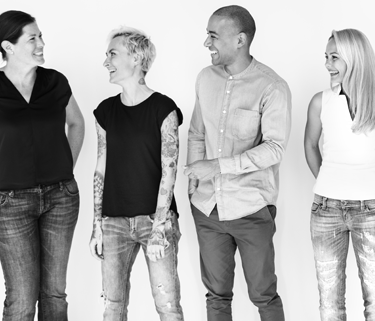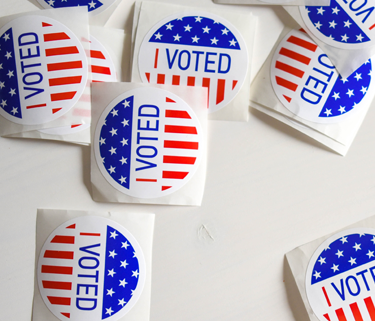Updated Oct. 15, 2025, 9:40 a.m. ET
Millions of people with disabilities rely on Social Security benefits to survive. Recent changes at the Social Security Administration (SSA) may make accessing these benefits harder than ever. Long wait times, office closures and staff cuts, and policy rollbacks are already raising concerns and exacerbating customer service issues. Here’s what you need to know.
What Is Social Security and Why Does It Matter?
Social Security provides benefits to over 74 million people, including over 11 million people with disabilities. It offers financial protection for individuals and their families when a worker retires or dies, or when someone has a qualifying disability. Many people with disabilities depend solely on their Social Security or Supplemental Security Income (SSI) benefits and related health coverage for their basic survival.
- Supplemental Security Income (SSI) helps people with disabilities and older adults who have little or no income and financial resources. SSI provides modest monthly benefits to help with basic needs like food, clothing, and shelter, averaging around $717 per month. In most states, recipients automatically qualify for Medicaid, which provides essential health care.
- Social Security Disability Insurance (SSDI) provides benefits to workers with qualifying disabilities and their families. It also provides access to health insurance coverage from Medicare. A related benefit called the “Disabled Adult Child” or DAC benefit provides income support and Medicare coverage to adults whose disabilities began before they were 22 years old.
A Growing Crisis: Long Wait Times and Delays
Even before recent changes, SSA was already struggling with long wait times and backlogs processing applications for disability benefits. Every year, thousands of people die while waiting for a decision on their disability benefit application. The 2025 government shutdown is only exacerbating the issue. In September 2025:
- Over 885,000 initial disability claims are pending, nearly double the number in 2019.
- The average wait time for an initial disability decision is 209 days (nearly 7 months).
- If an applicant is denied and requests a hearing, they can wait another 278 days (over 9 months). Some people wait over two years for a decision.
These delays have real consequences. People with disabilities who can’t access the benefits they need risk financial hardship, homelessness, and worsening health conditions. In 2023, 30,000 people died while waiting to access Social Security benefits.
Staffing Cuts and Office Closures
In 2025, SSA is planning for a dramatic reduction in staff and offices, including:
- Cutting 7,000 employees (over 12% of the agency’s workforce).
- Closure of 60% of SSA’s 10 regional offices, reducing key staff that help resolve problems with peoples’ benefits.
- Closure of SSA’s Office of Civil Rights and Equal Opportunity, which handled reasonable accommodation requests and managed the agency’s civil rights complaints, including public complaints of discrimination on the basis of disability. This office’s statutory responsibilities have reportedly been divided and moved to other divisions within SSA.
- Ending federal support for Supplemental Security Income (SSI)/Social Security Disability Insurance (SSDI) Outreach, Access, and Recovery (SOAR)
Why does this matter? SSA workers process disability applications, answer calls, and help people navigate complex benefit rules. With fewer staff and the consolidations of regional offices, wait times could get even worse. The loss of key staff also raises concerns about SSA’s ability to modernize, maintain, and improve essential services, further limiting accessibility for beneficiaries. Modernizing SSA’s operations requires long-term investments in systems and processes that are being undercut by these changes.
New Barriers and Policy Rollbacks
New barriers and policies that harm beneficiaries are also being implemented, including:
- Overpayment Collections: SSA can now withhold 50% of a person’s monthly SSDI check if they were overpaid, even if the overpayment was not their fault. This means someone’s SSDI benefit could suddenly be cut in half—potentially leaving them unable to make rent or buy food while the overpayment is collected or they request a waiver or alternate repayment plan. We spoke to KFF Health News about this issue in late 2023, and advocated for the pro-beneficiary policies that are now being rolled back.
- SSI Exemption: SSI beneficiaries are exempt from this policy change and still have a 10% default withholding rate.
- New Identity Verification Requirements: Starting April 14, 2025, SSA is implementing new measures to verify the identity of millions of people applying for benefits and changing their direct deposit information. Those who are unable to complete these processes online will be required to go to an SSA field office to verify their identity in-person.
- Only applies to applications and direct deposit changes: These in-person requirements only apply in two situations: 1. When someone applies for benefits over the phone and their application is flagged as potentially fraudulent; or 2. When a beneficiary is not able to use online services to change the bank account that their benefits are deposited into. SSA is no longer allowing beneficiaries to change their direct deposit information by phone. Beneficiaries will now be required to use a online or in-person services to change their direct deposit information. Please note: You do not need to contact SSA or go to a field office to continue your monthly benefits at your current bank. More information is available on the SSA website.
- These requirements will be especially burdensome for older adults, individuals who do not have reliable internet access or a smartphone, those that require assistance using online services, and those for whom online SSA services are not available. For example, there is no online application for Survivors’ Benefits and children under the age of 18 cannot have online Social Security accounts.
- This will also significantly disadvantage beneficiaries living in rural communities who must travel long distances to reach in-person services.
- Disability Hearings Impacted: SSA is closing some hearings rooms and has reportedly canceled some disability hearings because they could not use agency credit cards to pay for sign language interpreters or translators. This could create even more delays for applicants.
- Ending Paper Checks: As of September 30, 2025, SSA will no longer issue paper checks for benefit payments. Make sure you are set up to receive benefits via direct deposit or the Direct Express® card.
How This Affects People With Disabilities
To be clear, as of October 15, 2025, Congress and the Administration have not directly cut the benefit amounts that current Social Security recipients get each month, and they have promised not to cut Social Security benefits.
The ongoing disruption at the SSA will likely impact access to benefits, which can amount to an indirect benefit cut for both disability applicants and current beneficiaries experiencing problems with their benefits. It can also create an environment in which errors and benefit delivery interruptions may be more likely to occur. All of these changes have serious consequences for people with disabilities in the short-term and long-term:
- Application Delays Reduce Benefits: Many Social Security benefits are calculated based on the date people apply. Delays accessing these vital benefits can result in lower overall benefit amounts for Social Security disability beneficiaries.
- Benefit Interruptions: Disability beneficiaries already experience interruptions in their benefits for many different reasons, especially if they’re working. These changes at SSA could make benefit interruptions more frequent, longer, and more difficult to resolve.
- Longer Wait Times for Benefits: These changes at SSA will likely increase the backlog of people waiting for a decision on their disability application. We are concerned that these longer wait times mean more disability applicants will die before they can get the Social Security benefits they need and deserve.
- Harder to Get Help from SSA: Cuts to staff and resources make it more difficult to get assistance from SSA on the phone, online, and in-person. We have heard reports of 5-hour-long hold times for SSA’s 1-800 Helpline, brief outages of the ‘my Social Security’ online portal, temporary glitches displaying incorrect information about beneficiary payment status on online accounts, and month-long wait times to get an in-person appointment at an SSA field office.
Any changes to how SSA operates can be incredibly stressful for people with disabilities who need Social Security benefits to meet daily needs. For this reason, it is imperative that SSA be transparent about the changes they are making and the rationale for these changes. False claims about Social Security fraud also undermine trust in the system.
What Can You Do?
If you or a loved one relies on Social Security benefits, here’s some information to keep in mind. (Please note that this is general information, not legal advice. Due to the complexity of the system, the assistance of a lawyer can be helpful for resolving problems with your application or benefits.)
How to Request Casework Assistance from Your Member of Congress:
- If you need help resolving an issue with your Social Security benefits or dealing with SSA, you can get help from caseworkers in your Member of Congress’s office.
- Members of Congress cannot override decisions made by a federal agency, but they can often intervene on a person’s behalf to answer questions, find solutions, or help ensure you receive a fair and timely response to your problem.
- Different offices have different ways of handling casework, so it’s helpful to start by calling your Member of Congress and saying, “I am a constituent requesting casework assistance with a Social Security benefit. What is the best way for me to submit this request?” They may give you a phone number to call, an email address to contact, or refer you to a form on their website to start the intake process. Find your representative here.
- Be prepared to sign privacy release forms allowing staff to view personal information like your Social Security Number in order for them to assign a caseworker to handle your case. They will also ask for copies of documents relevant to the issue they are helping you with. Learn more about the casework process.
Other Practical Tips
- Keep Records: Getting and maintaining Social Security disability benefits requires providing records related to your educational, medical, financial, family, and work history to SSA. In recent weeks, outages and other glitches impacting online ‘my Social Security’ accounts have also become more frequent.
- Calls to SSA: When you call the SSA Helpline (1-800-772-1213), keep a record of the date, name of person you spoke to, what you asked, and what they told you. If the information you received does not make sense, sounds incorrect, or is not helpful, you can ask to speak with a supervisor.
- Mail from SSA: When you get mail from SSA, promptly open, read, and keep a copy of it. Sometimes mail from SSA includes instructions and a deadline for something you need to do.
- Documents You Submit to SSA: Make copies of all documents you give to SSA. Keep copies of the forms you fill out, other materials, and the date you sent them to SSA.
- Your Social Security Record: If you are more than 18 years old, you can access your Social Security records online through a ‘my Social Security’ account. Download and keep copies of your records from the site including:
- Your Statement
- Your Benefit Verification Letter
- Your Tax Form from SSA
- Your Earnings Record
- Your Benefits & Payments, which shows the date and amount of your next payment.
- Screenshots of any error messages or information pertaining to your payment status that appear to be incorrect.
- Be Proactive:
- Avoiding Overpayments: Try to prevent problems with benefits before they arise by reporting any changes that could impact your benefits to SSA as soon as possible. Examples of things to report include changes to your contact information, address, disability/health condition, marital status, parental status, employment status, income, who you live with, and financial resources over $2,000 for SSI beneficiaries.
- Setting Up a ‘my Social Security’ Account: If you are an adult receiving Social Security or SSI benefits and do not already have a ‘my Social Security’ account, it’s a good idea to set one up so it is available whenever you need it. SSA is increasingly encouraging people to use online services. Setting up an account will help you get easier access to information about your benefits.
- Beware of Scammers: We are concerned that the rapid rollout of the digital identity verification tool could provide an opportunity for scammers to impersonate the SSA and harm beneficiaries. Remember, SSA will never text, message you on social media, or email you to ask for money or personal information. Learn more about common Social Security scams.
- Know Your Rights: Information on your rights as a beneficiary or applicant are available at this page for SSDI and this page for SSI. If you receive an overpayment notice, you can appeal, request a waiver, or request a different repayment plan.
- You Are Not Alone: Social Security disability beneficiaries can do everything right and still run into problems due to mistakes from SSA or other complexities in the system. It can be discouraging, frustrating, and anxiety-inducing. Please know you are not alone. The problems at SSA are bigger than any one person– that’s why we’re working together to make the system better for everyone.
- Share Your Story: Personal stories help highlight the real impact of these changes. If you’ve been affected, consider sharing your experience with advocacy groups like The Arc.
The Arc Is Fighting for You
At The Arc, we are committed to advocating for policies that strengthen, not weaken, Social Security. We are working with Congress and disability rights organizations to push for oversight, protect Social Security programs, prevent harmful cuts, and improve access for those who need it most. We also continue to advocate for an increase in the SSI asset limit, which for nearly 40 years has been stuck at just $2,000 for individuals and $3,000 for married couples—far too low to get by in today’s economy.
The Arc has been a champion of Social Security for half a century. We played a key role in the creation of the Supplemental Security Income program to help build financial stability for people with disabilities. Today, we serve as a Co-Chair on the Consortium for Constituents with Disabilities’ Social Security Task Force, working to protect and update these vital programs.
Written by: Darcy Milburn, Director of Social Security & Healthcare Policy at The Arc of the United States







 Born at 27 weeks and just over 2 pounds, Logan was small enough to fit in the palm of his mom’s hands. He spent a month in the neonatal intensive care unit on heart monitors and chest tubes, and his lungs collapsed twice. The doctors told his mom that Logan would never talk or speak and that he would be a “vegetable.” But they were wrong.
Born at 27 weeks and just over 2 pounds, Logan was small enough to fit in the palm of his mom’s hands. He spent a month in the neonatal intensive care unit on heart monitors and chest tubes, and his lungs collapsed twice. The doctors told his mom that Logan would never talk or speak and that he would be a “vegetable.” But they were wrong. The current SSI asset limit means that Logan can’t open his own cattle business, since even owning one steer would put him over the limit.
The current SSI asset limit means that Logan can’t open his own cattle business, since even owning one steer would put him over the limit.


 Charlotte is an advocate with Down syndrome who was born with a congenital heart defect. She had to undergo multiple surgeries as a child and finally received a heart transplant in 2012. The journey to get her heart transplant had its challenges, but she used her experience to fight to make sure everyone had access to organ transplants. To make this a reality, Charlotte spoke with policymakers about creating a bill about organ transplant discrimination. Members of Congress created the
Charlotte is an advocate with Down syndrome who was born with a congenital heart defect. She had to undergo multiple surgeries as a child and finally received a heart transplant in 2012. The journey to get her heart transplant had its challenges, but she used her experience to fight to make sure everyone had access to organ transplants. To make this a reality, Charlotte spoke with policymakers about creating a bill about organ transplant discrimination. Members of Congress created the 

 For some, August can be a time for camping trips, beach days, and other fun summer activities. But for members of Congress, August signals the start of Congressional Recess. During August recess, U.S. senators and representatives leave Washington, DC, and travel to their home states and districts to begin a fast-paced schedule of constituent meetings, town halls, and other community events.
For some, August can be a time for camping trips, beach days, and other fun summer activities. But for members of Congress, August signals the start of Congressional Recess. During August recess, U.S. senators and representatives leave Washington, DC, and travel to their home states and districts to begin a fast-paced schedule of constituent meetings, town halls, and other community events.





